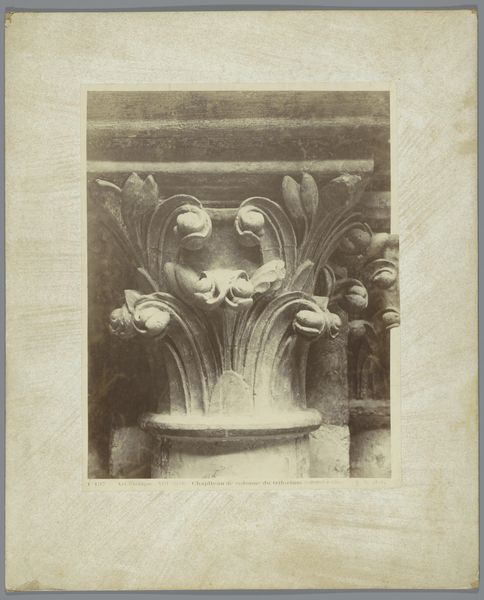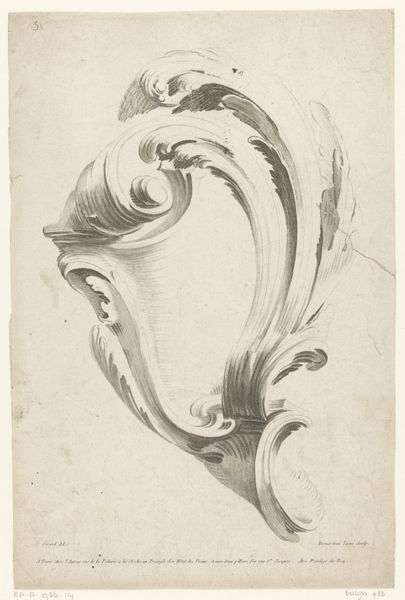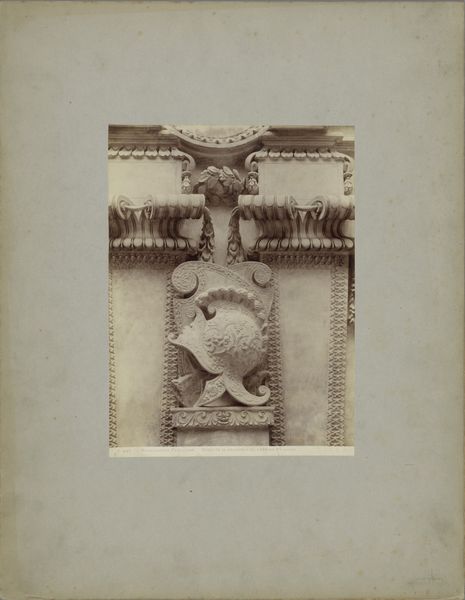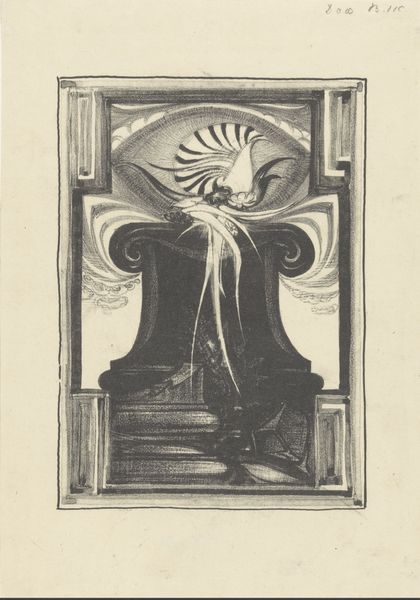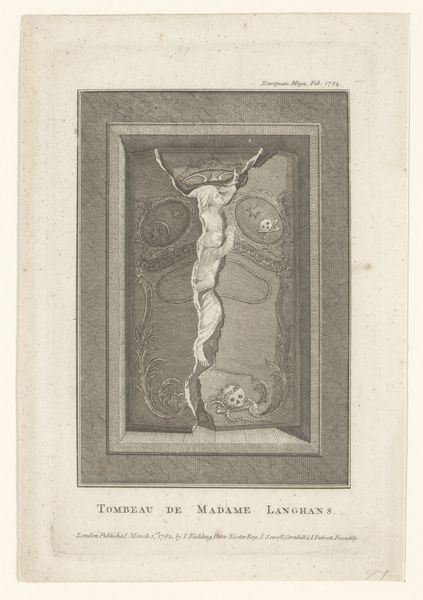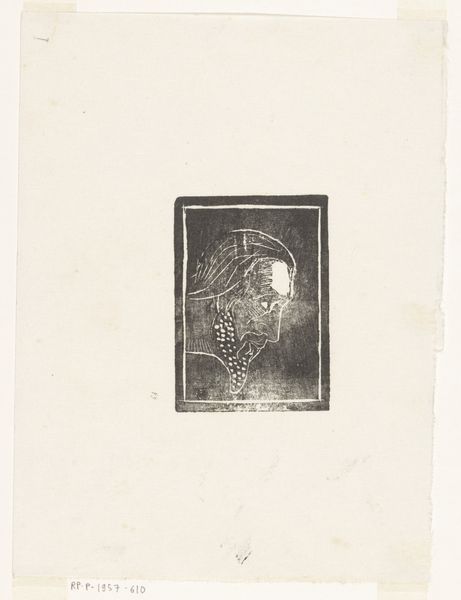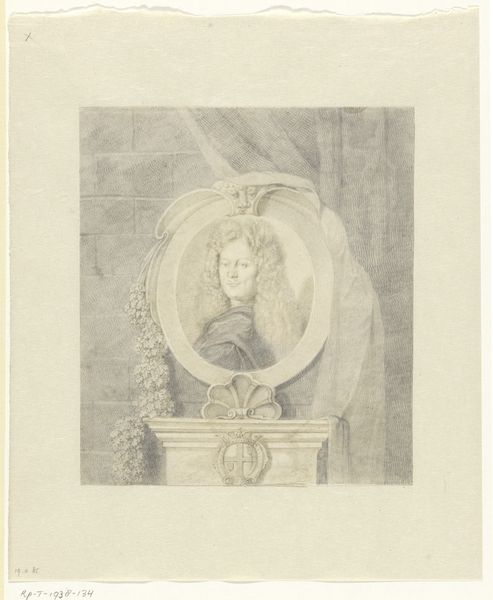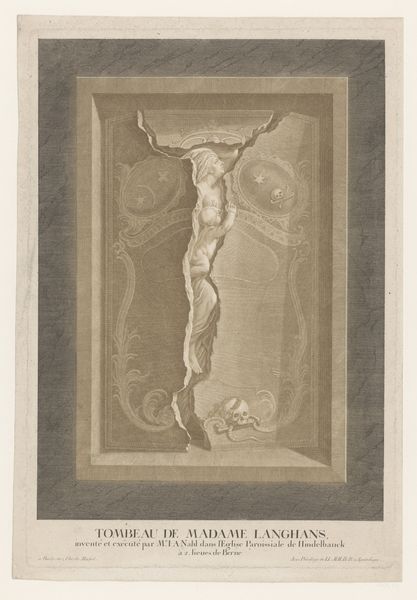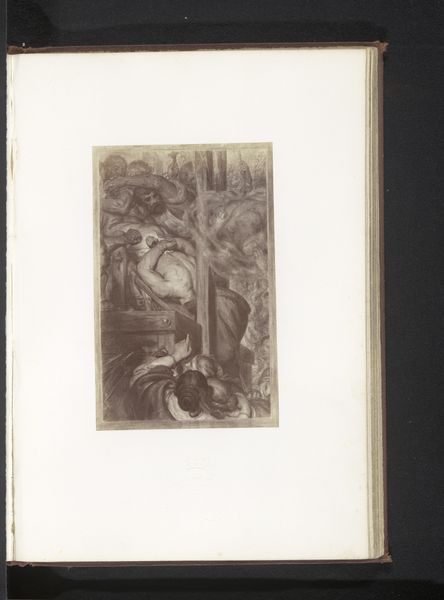
Afgietsel van een kapiteel in de Kathedraal van Laon c. 1875 - 1900
0:00
0:00
carving, print, photography
#
carving
# print
#
photography
#
ancient-mediterranean
Dimensions: height 257 mm, width 201 mm
Copyright: Rijks Museum: Open Domain
Curator: This intriguing photograph by Adolphe Giraudon, titled "Afgietsel van een kapiteel in de Kathedraal van Laon," was taken sometime between 1875 and 1900. The image resides in the collection of the Rijksmuseum. Editor: My first impression is one of restrained elegance. The monochromatic tones emphasize the form and the intricate detailing of the capital, drawing me in to analyze its shapes. Curator: Indeed. What Giraudon captures is more than mere aesthetics. Consider Laon Cathedral's place within the tumultuous history of 12th-century France, marked by shifting power dynamics between the church and emerging urban communes. Architectural details like this capital reflect the values and the patronage that constructed them, asserting religious authority amidst social change. Editor: From a formal perspective, note how Giraudon uses light and shadow to articulate the swirling volutes and acanthus leaves. The composition’s depth guides the viewer's eye around the sculpted forms, giving it a kind of internal rhythm. The texture also suggests the stonework from which it came. Curator: Right. And remember, medieval cathedrals were often sites of intense community involvement, spaces where societal narratives were both reinforced and challenged. The very act of casting and photographing this capital can be viewed as a form of preservation, but also a recontextualization of medieval artistry in a modern era grappling with industrialization and secularism. What does it mean to reproduce it? Editor: I see your point about its modern recasting. In capturing this piece, Giraudon frames it, both literally and figuratively. He asks us to appreciate the capital not just as a structural element, but as an isolated sculpture worthy of artistic scrutiny, a study of form dislodged from structural dependency. Curator: Giraudon's lens, whether intentional or not, opens avenues for questioning not only our understanding of architectural history but also of the very act of seeing. This print invites conversations around authenticity, reproduction, and the legacies we inherit. Editor: And on the sheer beauty of a timeless architectural feature, stripped of color, and brought to life again by its monochromatic texture.
Comments
No comments
Be the first to comment and join the conversation on the ultimate creative platform.
